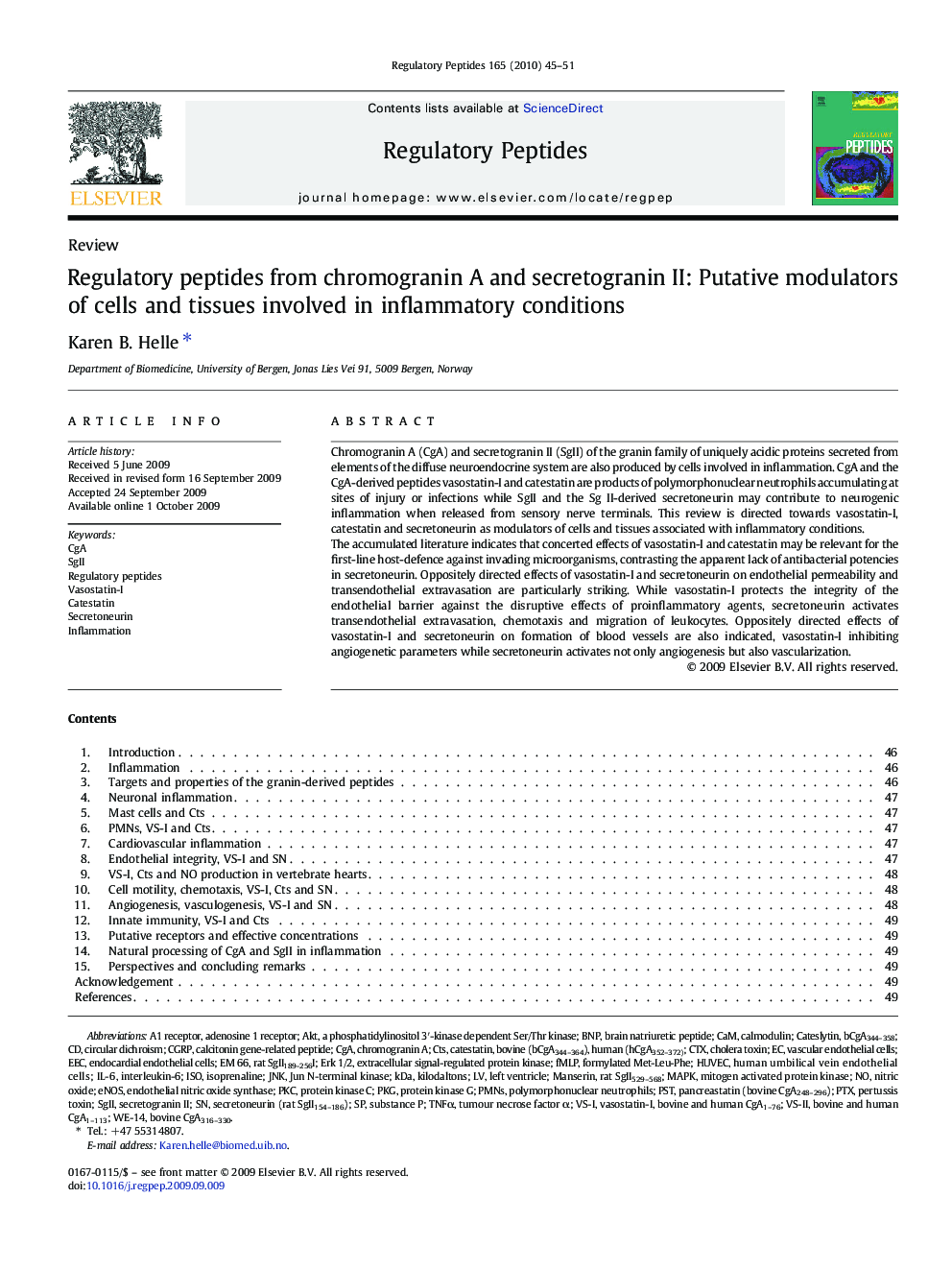| Article ID | Journal | Published Year | Pages | File Type |
|---|---|---|---|---|
| 2022637 | Regulatory Peptides | 2010 | 7 Pages |
Chromogranin A (CgA) and secretogranin II (SgII) of the granin family of uniquely acidic proteins secreted from elements of the diffuse neuroendocrine system are also produced by cells involved in inflammation. CgA and the CgA-derived peptides vasostatin-I and catestatin are products of polymorphonuclear neutrophils accumulating at sites of injury or infections while SgII and the Sg II-derived secretoneurin may contribute to neurogenic inflammation when released from sensory nerve terminals. This review is directed towards vasostatin-I, catestatin and secretoneurin as modulators of cells and tissues associated with inflammatory conditions.The accumulated literature indicates that concerted effects of vasostatin-I and catestatin may be relevant for the first-line host-defence against invading microorganisms, contrasting the apparent lack of antibacterial potencies in secretoneurin. Oppositely directed effects of vasostatin-I and secretoneurin on endothelial permeability and transendothelial extravasation are particularly striking. While vasostatin-I protects the integrity of the endothelial barrier against the disruptive effects of proinflammatory agents, secretoneurin activates transendothelial extravasation, chemotaxis and migration of leukocytes. Oppositely directed effects of vasostatin-I and secretoneurin on formation of blood vessels are also indicated, vasostatin-I inhibiting angiogenetic parameters while secretoneurin activates not only angiogenesis but also vascularization.
